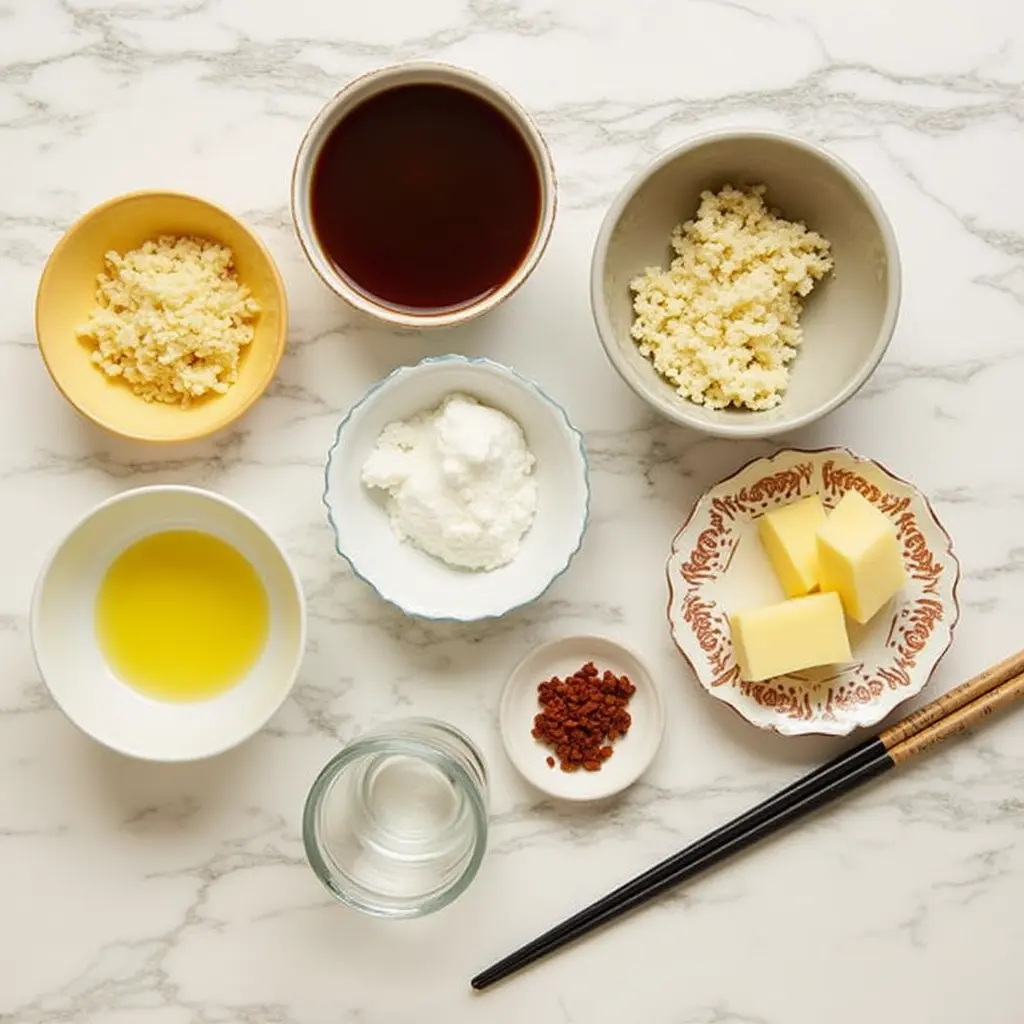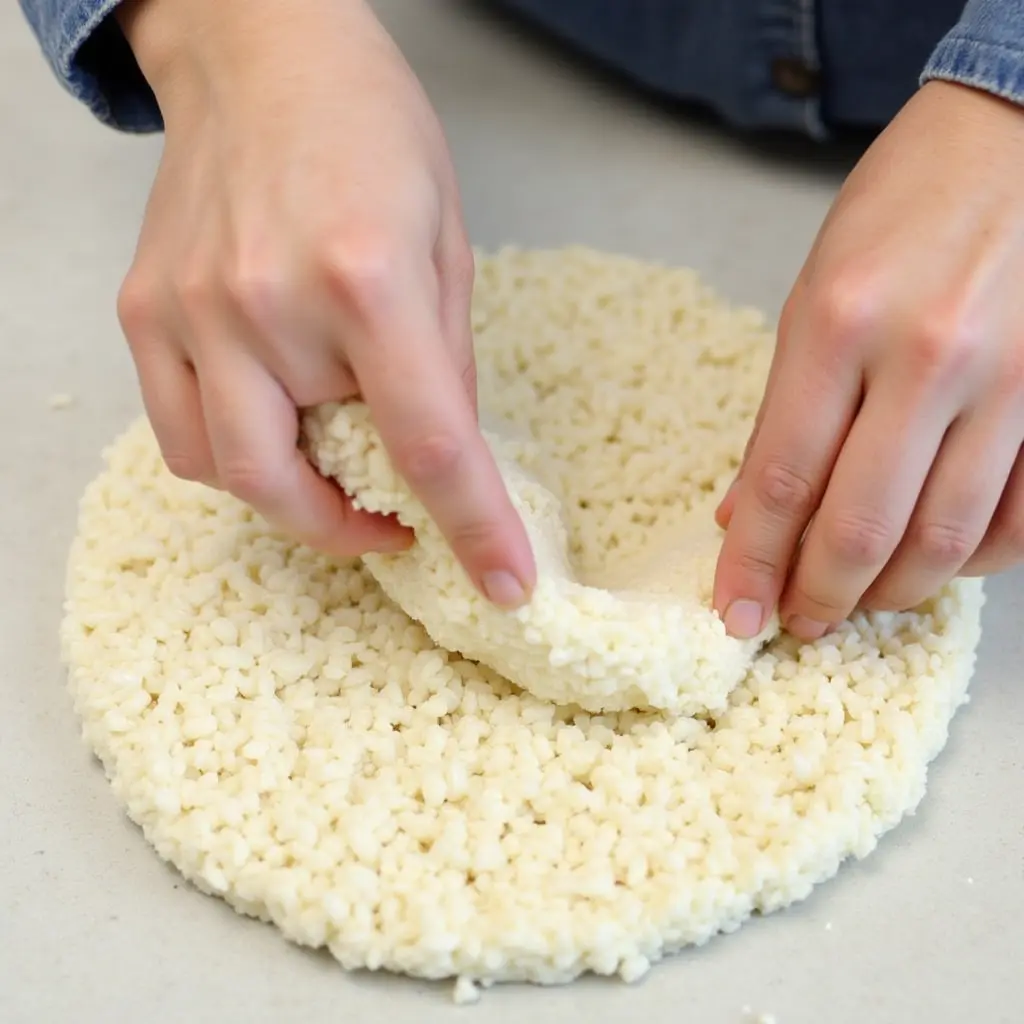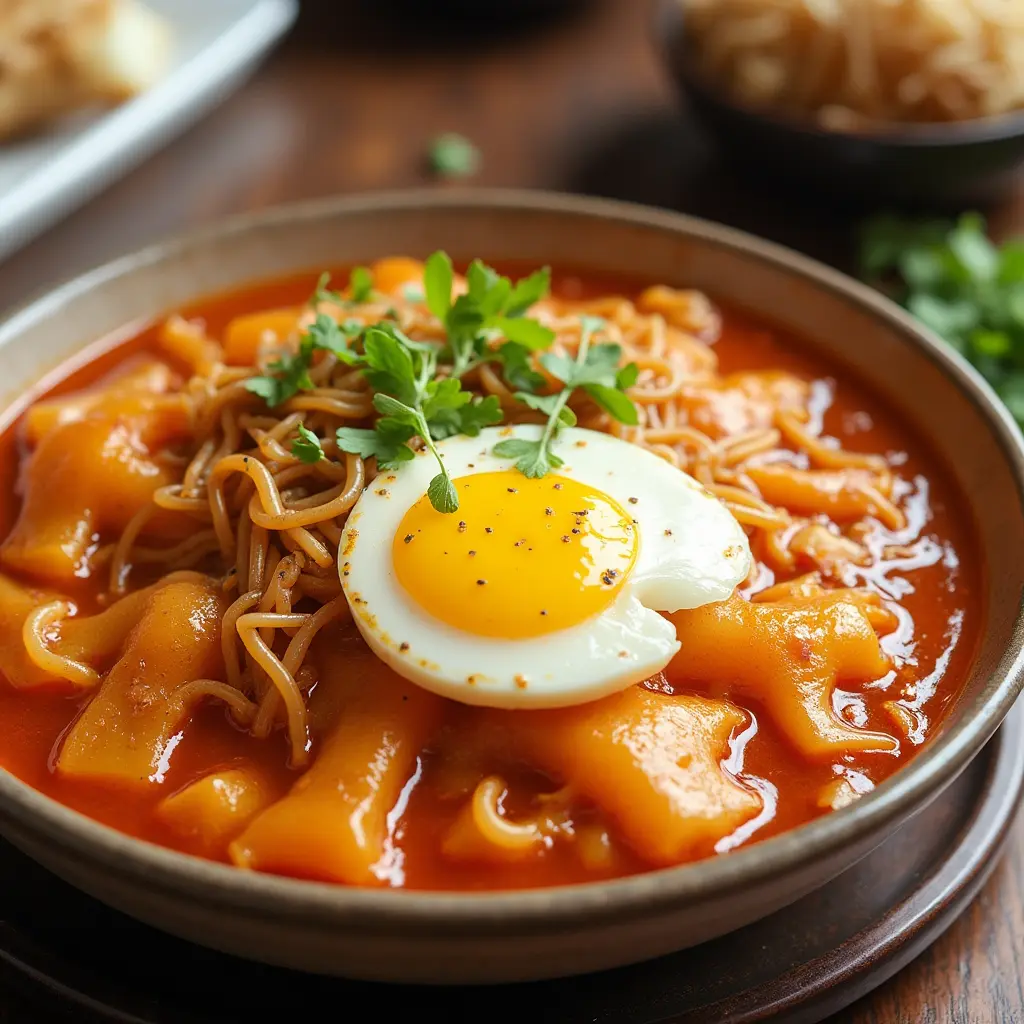Introduction to Korean Food Tteokbokki Recipe
Korean Food Tteokbokki Recipe is a beloved dish with a deep cultural significance. This dish, known for its chewy rice cakes coated in a flavorful sauce, is a staple in Korean cuisine. Found in street markets and restaurants alike, it remains a favorite among locals and international food enthusiasts.
The appeal of Korean Food Tteokbokki Recipe lies in its balance of sweet, spicy, and savory flavors. While the traditional version is widely enjoyed, modern variations cater to a range of taste preferences. Understanding its origins, ingredients, and preparation methods will ensure that you can recreate an authentic experience at home.
What is Tteokbokki?
Korean Food Tteokbokki Recipe refers to a dish made from soft rice cakes simmered in a rich sauce. The primary sauce components include gochujang (Korean chili paste), soy sauce, and sugar, creating a distinctively spicy and slightly sweet flavor.
This dish has evolved beyond its classic form, incorporating ingredients like cheese, seafood, and cream to suit diverse palates. Whether enjoyed as a snack or a meal, Korean Food Tteokbokki Recipe delivers a comforting taste that many find irresistible.
Additionally, this dish plays a vital role in Korean culinary traditions. It is frequently served during festive occasions and is a popular choice among street vendors. Its adaptability makes it a dish that continues to thrive in contemporary cuisine.
History of Tteokbokki
The origins of Korean Food Tteokbokki Recipe can be traced back to the Joseon Dynasty when it was initially known as “gungjung tteokbokki.” This version was stir-fried with soy sauce and included vegetables, beef, and mushrooms. Unlike today’s spicy rendition, it had a savory and slightly sweet profile.
In the mid-20th century, the modern Korean Food Tteokbokki Recipe emerged when a street food vendor experimented with gochujang, leading to the creation of the red, spicy variation. This innovation quickly gained popularity, becoming a signature dish in Korea’s vibrant street food scene.
Since then, Korean Food Tteokbokki Recipe has undergone numerous adaptations, integrating elements from global cuisines while maintaining its cultural essence. Today, it remains an essential dish that represents Korea’s dynamic culinary heritage.
Ingredients for Tteokbokki
To prepare an authentic Korean Food Tteokbokki Recipe, gathering the right ingredients is crucial. The dish requires a few essential components that contribute to its signature taste and texture.

Essential Ingredients:
- Rice cakes (tteok) – The foundation of the dish, offering a chewy texture.
- Gochujang – Provides a deep, spicy flavor.
- Gochugaru (Korean chili flakes) – Enhances the heat level.
- Fish cakes (eomuk) – Adds a savory element.
- Soy sauce – Balances the saltiness and umami.
- Sugar – Creates the signature sweetness.
- Garlic – Boosts the depth of flavor.
- Anchovy broth or water – Forms the base of the sauce.
Alternative Ingredients:
- Replace anchovy broth with vegetable broth for a vegetarian version.
- Add cheese for a creamy twist.
- Use honey instead of sugar for a natural sweetness.
Step-by-Step Cooking Instructions
Perfecting a Korean Food Tteokbokki Recipe requires attention to detail. Following a structured method ensures that the rice cakes remain chewy while the sauce develops a rich consistency.
- Prepare the rice cakes by soaking them in warm water.
- Mix the sauce ingredients, including gochujang, soy sauce, sugar, and garlic.
- Boil anchovy broth in a deep pan to create the sauce base.
- Add the sauce mixture and stir well until combined.
- Simmer the rice cakes and fish cakes in the sauce for optimal texture.
- Garnish with sesame seeds and green onions before serving.
Each step plays a vital role in crafting an authentic and flavorful Korean Food Tteokbokki Recipe.
Preparing the Rice Cakes
Before cooking, properly preparing the rice cakes is essential for achieving the right consistency.
- If using store-bought rice cakes, soak them in warm water for 20 minutes to soften.
- If making homemade rice cakes, ensure they are steamed properly to retain their elasticity.
- Avoid over-soaking, as this can cause the rice cakes to break down during cooking.
By taking these steps, your Korean Food Tteokbokki Recipe will have the perfect chewiness.

Making the Spicy Sauce
The sauce defines the bold flavor of the Korean Food Tteokbokki Recipe. A well-balanced combination of ingredients results in the perfect balance of heat, sweetness, and umami. Use a 2:1 ratio of gochujang to sugar for the right sweetness. Adjust the spice level by adding or reducing gochugaru to your preference. For a deeper, richer flavor, you can add a touch of soy sauce or fish sauce. Mix thoroughly to ensure a smooth, even consistency before adding it to the dish. Make sure the sauce coats the rice cakes evenly, giving each bite a satisfying burst of flavor. For an extra kick, you can add garlic, ginger, or a splash of vinegar to enhance the complexity. Finally, garnish with chopped green onions for added freshness. Enjoy the perfect Tteokbokki!
Cooking Process
Once the sauce is prepared, cooking Korean Food Tteokbokki Recipe is a straightforward process:
- Heat anchovy broth in a large pan over medium heat.
- Add the spicy sauce and mix until fully dissolved.
- Stir in the rice cakes and let them absorb the flavors.
- Add fish cakes and simmer until the sauce thickens.
- Garnish with sesame seeds and green onions before serving.
Following these steps guarantees a flavorful result, perfect for enjoying this delicious Korean dish at home.
Variations of Tteokbokki
Korean Food Tteokbokki Recipe has numerous variations, including:
Cheese Tteokbokki – Topped with melted cheese for a creamy, rich taste.
Rose Tteokbokki – A mild version using heavy cream, offering a smoother, less spicy flavor.
Soy Sauce Tteokbokki – A non-spicy alternative for those who prefer a savory, umami profile.
Each variation offers a unique take on the classic dish, allowing for customization based on personal preferences and dietary needs.
Serving Suggestions
Korean Food Tteokbokki Recipe is best enjoyed fresh and hot, served as a main dish or a snack. To enhance its flavors and presentation, consider these serving suggestions:
- Pair with Side Dishes – Serve with kimchi, pickled radish, or steamed dumplings for a balanced meal.
- Garnish for Extra Flavor – Sprinkle sesame seeds, chopped green onions, and shredded seaweed for an added layer of taste.
- Add a Protein Element – Pair with boiled eggs, sliced fish cakes, or grilled meat for a more substantial dish.
- Serve with Refreshing Beverages – Enjoy with barley tea, iced green tea, or a light citrus drink to balance the heat.
Whether served as a snack or a complete meal, Korean Food Tteokbokki Recipe remains a flavorful and comforting dish.

Nutritional Information
Understanding the nutritional profile of Korean Food Tteokbokki Recipe helps in making informed dietary choices. While delicious, it is essential to consume it in moderation due to its carbohydrate and sodium content. The dish is typically high in energy, making it a filling option, but careful adjustments can help balance it for a healthier meal.
Nutritional Breakdown (Per Serving):
Calories: Approximately 300-400 kcal
Carbohydrates: 60-70g (primarily from rice cakes)
Protein: 5-10g (varies with added ingredients like fish cakes or eggs)
Fats: 5-10g (depending on sauce composition)
Sodium: 800-1000mg (from gochujang and soy sauce)
To make a healthier version, opt for brown rice cakes, reduce sugar content, and incorporate more vegetables. Adjusting ingredients can help tailor the dish to various dietary needs while maintaining its flavor.
Common Mistakes to Avoid
Cooking Korean Food Tteokbokki Recipe may seem simple, but a few common mistakes can affect its taste and texture. Avoid these pitfalls to ensure a successful dish:
- Overcooking the Rice Cakes – Cooking for too long can make them mushy instead of chewy.
- Skipping the Soaking Process – If using packaged rice cakes, failing to soak them results in a tough texture.
- Not Balancing the Sauce – Too much gochujang or sugar can overwhelm the dish’s natural flavors.
- Using Insufficient Broth – The sauce should be thick yet fluid; too little broth can lead to a dry dish.
- Cooking on High Heat – Simmering on medium heat allows the flavors to blend properly without burning the sauce.
Being mindful of these mistakes ensures that your Korean Food Tteokbokki Recipe turns out perfectly every time.
Tteokbokki Storage and Reheating
If you have leftovers, storing and reheating Korean Food Tteokbokki Recipe properly ensures that it retains its taste and texture.
Storage Tips:
- Refrigeration – Store in an airtight container for up to 2 days to maintain freshness and flavor.
- Avoid Freezing – The rice cakes can become too hard and lose their chewy consistency when frozen, making them less enjoyable.
Reheating Methods:
- Stovetop: Add a little water or broth to a pan, reheat on low heat, and stir gently to restore the sauce’s consistency. This method helps preserve the texture and flavor.
- Microwave: Place in a microwave-safe dish with a splash of water, cover loosely, and heat for 1-2 minutes, stirring midway to ensure even heating. Be careful not to overheat.
FAQs
What is Korean tteokbokki made of?
Tteokbokki is a popular Korean street food made from tteok (chewy rice cakes), typically cooked in a spicy, savory sauce. The sauce’s base consists of gochujang (Korean red chili paste), soy sauce, garlic, sugar, and sometimes gochugaru (chili flakes) for extra heat. Fish cakes, boiled eggs, green onions, and sesame seeds are common additions. Some variations include cheese, ramen noodles, or cream-based sauces. Tteokbokki has a bold, spicy-sweet flavor and a satisfying chewy texture, making it a favorite comfort food in Korea. It is widely enjoyed as a snack or meal, especially on chilly days, and is often served in street food stalls or enjoyed at home with friends and family.
How to make tteokbokki at home?
To make tteokbokki at home, start by soaking Korean rice cakes in warm water if they are hard. In a pan, prepare the sauce by mixing gochujang, soy sauce, sugar, garlic, and water or broth. Bring it to a simmer, then add the rice cakes and fish cakes. Let everything cook until the sauce thickens and coats the ingredients well. Stir occasionally to prevent sticking. For extra flavor, add boiled eggs, green onions, and sesame seeds. Some people also include cheese or ramen for a richer taste. Serve hot and enjoy this delicious Korean street food! It’s a perfect dish for sharing with friends or enjoying on your own.
What do Koreans eat with tteokbokki?
Koreans often enjoy tteokbokki with complementary side dishes for a complete meal. A common pairing is odeng (fish cake skewers) served in a light broth, balancing the spice. Kimbap (seaweed rice rolls) is another favorite, offering a mild contrast to the bold flavors. Fried foods (twigim), such as tempura vegetables or shrimp, are also popular, adding a crispy texture. Many also drink soothing beverages like banana milk or cool barley tea to counter the heat. Some like to add instant ramen or boiled eggs directly into the tteokbokki for extra richness and heartiness. These pairings enhance the overall dining experience, making tteokbokki even more enjoyable.
Is eating tteokbokki healthy?
Tteokbokki can be both healthy and indulgent, depending on ingredients and portion size. Rice cakes are made from glutinous rice, providing energy-rich carbohydrates, but they lack protein and fiber. The gochujang-based sauce can be high in sodium and sugar, which may not be ideal for frequent consumption. However, homemade versions with less sugar, lean proteins like tofu, and added vegetables like cabbage and carrots can make it healthier. You can also incorporate a variety of greens for added nutrients. While tteokbokki is delicious, it is best enjoyed in moderation, alongside balanced meals. Drinking water or tea afterward helps counteract the saltiness of the dish.
Conclusion
Preparing Korean Food Tteokbokki Recipe at home is both rewarding and delicious. By understanding the ingredients, techniques, and variations, you can craft an authentic version suited to your preferences. Whether you enjoy the traditional spicy taste or opt for a milder alternative, this dish remains a beloved part of Korean cuisine.
Mastering this recipe ensures you can savor an authentic experience anytime. It’s a versatile dish that can be adjusted to suit different taste profiles, making it a perfect meal for any occasion. Enjoy the flavors of Korea right from your kitchen!

